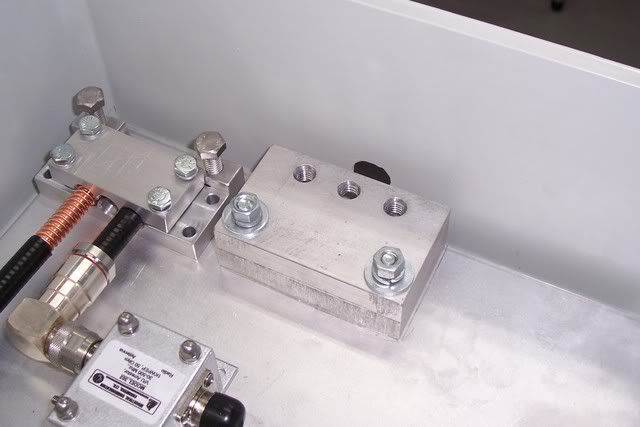Tonsoffun
From The RadioReference Wiki
Grounding Bulkhead for your scanning station
WARNING:
Contact with high voltages from electricity or lightning is deadly. Consult a licensed professional before you design, build, connect to or operate any kind of electrical grounding system or lightning protection scheme. This wiki member assumes no liability for any material or advice presented here, all of which is for purely educational purposes. Here is some great info on grounding, check it out! I have always used this site for info. There is so much information on the internet about grounding that sometimes may make your head explode. Again, I am no professional and just trying to make my shack a little safer and mostly to give people some simple insite on grounding, but also not spending a ton of money doing so. This project will be mounted on my Tilt-Over that is in the Wiki.
Yes, You NEED to bond your electric power entrance ground to your radio station ground, AND you NEED to bond your tower ground to the rest of your ground system. BOND all grounds together! It is a very good idea to add some 8 foot ground rods every 20 or so feet along your bond wire path if running for a long distance. Always add weather protection to ground rod connections. Products such as RTV Compound, or roof patching tar make for electrical joints. Use an anti-oxidant compound to coat the conductors before connecting them together as a further protection from weatherization. Many are available, I am using Ideal Noalox.
I purchased this outdoor equipment box from my local electrical supplier.
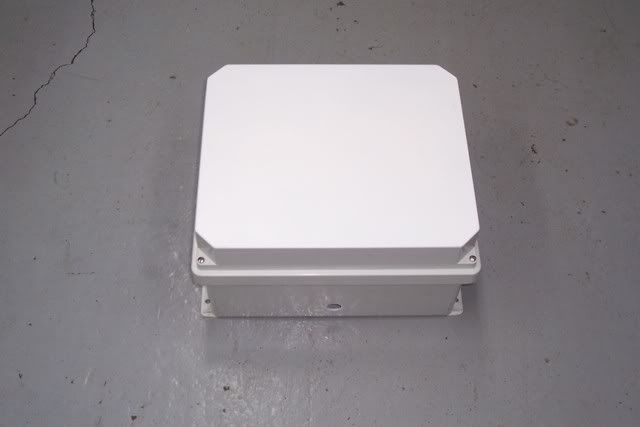
For the inside bulkhead I already had a piece if of 1/4" aluminum to mount all my ICE suppressors.A rack panel of 1/8" thick aluminum is quite nice and easy to obtain through electronic distributors. Copper plate is ideal if available, but even a steel plate is acceptable. A bulkhead plate is defined as a high integrety, zero or low inductance earth terminal connection. For that reason a bulkhead plate should always be placed very close to or on the ground with its lead connections to earth entry point very short - preferably less than a foot long.
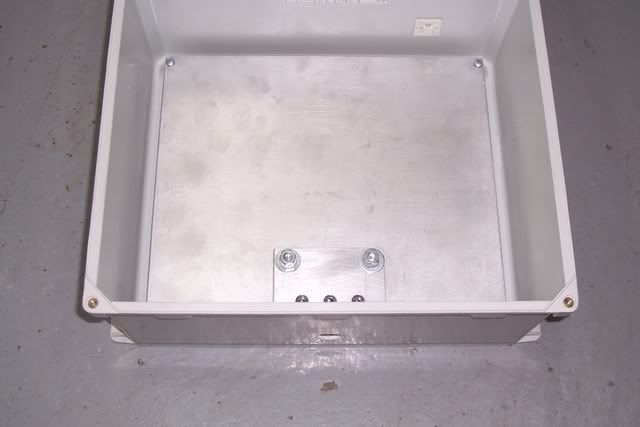
I built this grounding hub fitting but can be bought Here. This hub is mounted on the aluminum bulkhead in the box and is directly going to be mounted on a ground rod. Remember that all equipment that will be mounted on this bulkhead will be coated with Anti-oxidant to ensure good conductivity, More on that later.

This picture below is a grounding block that I built(but can be bought Here) for my coaxial cable shields and is one of the most beneficial and inexpensive procedures that communication owners can undertake to reduce ground level leakage radiation, lower receiver noise, provide direct shunt control of lightning currents and establish common-point neutral. This is also directly mounted on the bulkhead before the cable is connected to the suppressors.
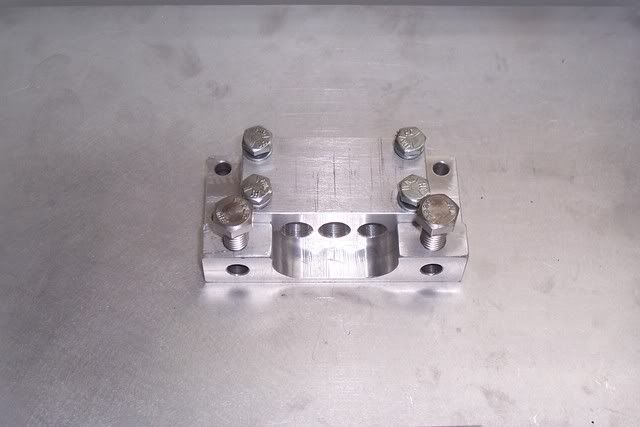
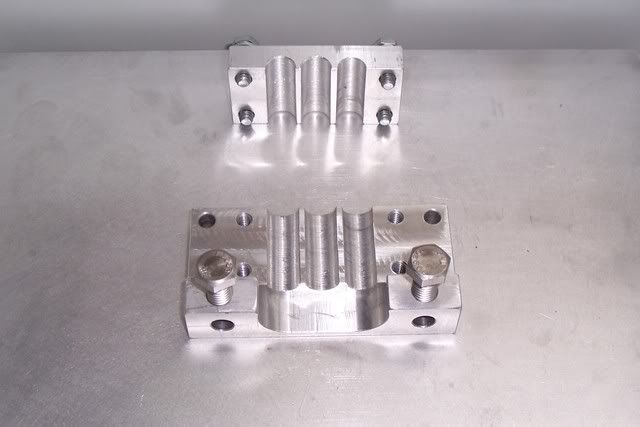
Here is my heliax cable that is stripped for reference and shows how it is mounted in/on the ground block.
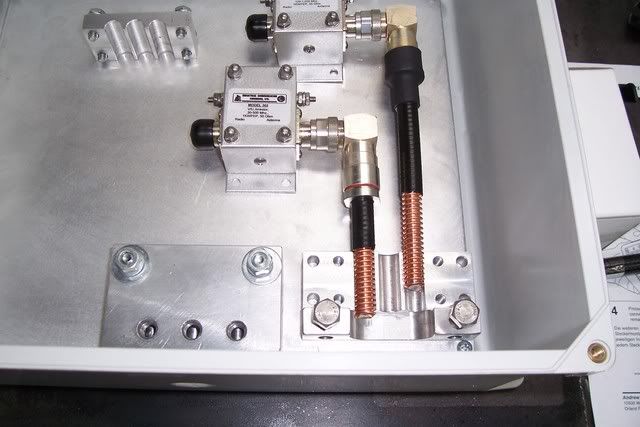
A little closer shot of the hub.
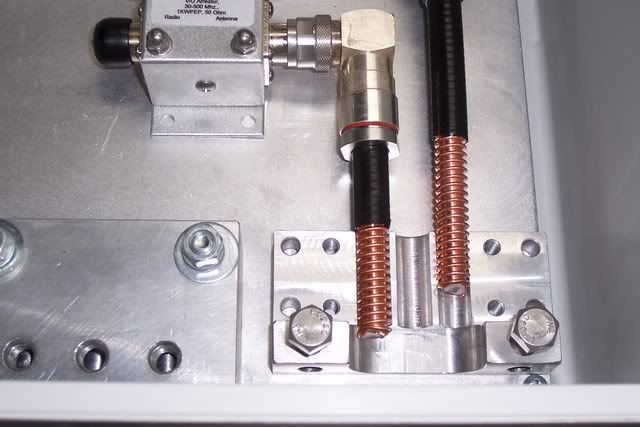
Here is a picture with the top on the hub.
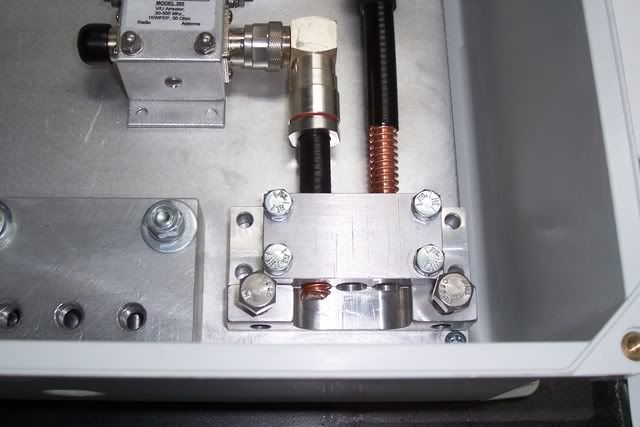
Those example heliax cables that are connected to the ICE suppressors will be coming from the antennas and will have to drill some holes in the bottom of the box. Here is another picture.
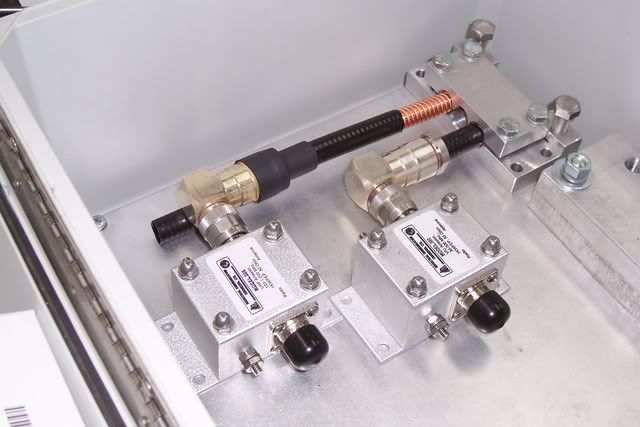
This picture below shows the ICE suppressors for my Omni,LP log and rotor that are all going to be mounted on the bulkhead. Right now, I am just trying to fit and configure everything before actually threading holes and permently mounting the equipment.
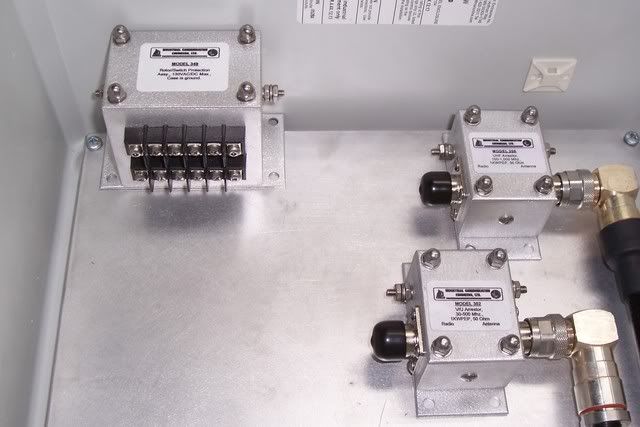
This is the hole where the rod comes through the box and mounted directly on the ground rod.
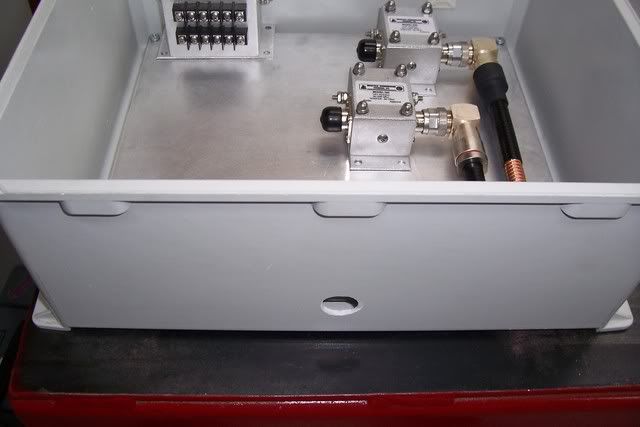
Here is a pic of the inside where the rod will come in.
